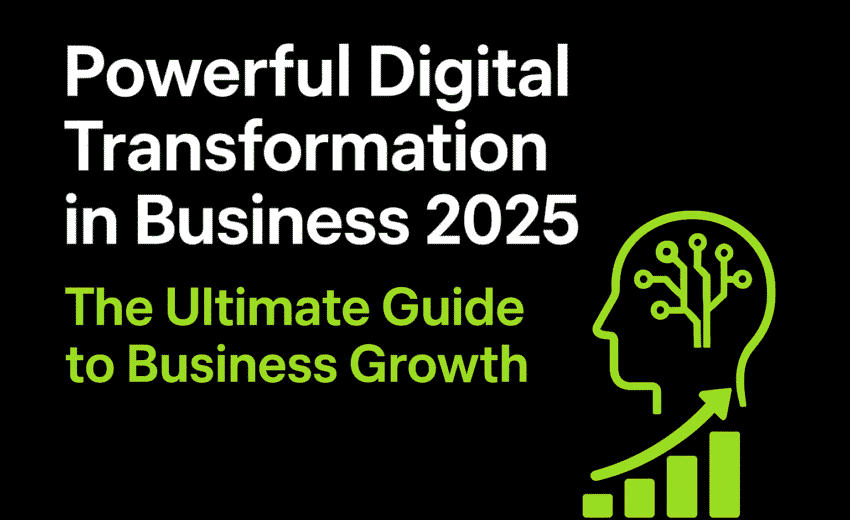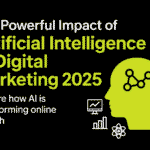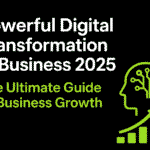
Explore the powerful Digital Transformation in Business 2025 strategies reshaping industries. Learn how AI, automation, cloud computing, and data-driven insights are driving growth and efficiency.
Introduction
The digital economy is evolving faster than ever. At the heart of this shift lies Digital Transformation in Business 2025, where companies leverage AI, automation, and cloud solutions to enhance operations and boost growth.
In this guide, we’ll uncover why Digital Transformation in Business 2025 is critical, what drives it, and how organizations can adopt these strategies for long-term success.
What is Digital Transformation in Business 2025?
At its core, Digital Transformation in Business 2025 means rethinking business processes using technology to maximize value.
Key elements include:
- AI-powered insights
- Cloud-based operations
- Process automation
- Strong cybersecurity
- Customer-first experiences
Some businesses call this the “future of digital business,” where technology fuels every decision.
Key Drivers of Digital Transformation
1. Artificial Intelligence (AI)
AI plays a central role in business modernization. It helps automate repetitive tasks, forecast trends, and personalize customer journeys.
Example: Retailers use AI-driven chatbots to serve millions of customers instantly.
2. Cloud Computing
Migrating to the cloud is no longer optional. Cloud platforms allow businesses to scale rapidly, improve collaboration, and reduce costs.
Variation term: Many CIOs consider this “enterprise digital strategies for 2025.”
3. Automation
Robotic Process Automation (RPA) cuts down manual effort. From payroll to inventory, automation ensures accuracy and efficiency.
4. Cybersecurity Innovation
As businesses digitize, threats evolve. That’s why Digital Transformation in Business 2025 emphasizes AI-driven security and zero-trust frameworks.
5. Data-Driven Decisions
Instead of gut feelings, modern companies rely on big data analytics to predict trends, monitor customer needs, and optimize processes.
Benefits of Digital Transformation in Business 2025
- Enhanced productivity
- Lower operational costs
- Improved customer engagement
- Better decision-making through analytics
- Long-term competitive advantage
Real-World Examples
- Amazon optimizes its global supply chain with AI and automation.
- Tesla integrates IoT and AI into vehicles, redefining the auto industry.
- Walmart leverages cloud computing for smarter inventory management.
Each example shows how future-ready digital business strategies are reshaping industries.
Challenges of Adopting Digital Transformation
- High upfront costs
- Employee resistance to change
- Shortage of digital skills
- Rising cybersecurity risks
Solution: Adopt gradual transformation, provide workforce training, and invest in secure digital platforms.
Roadmap for Successful Digital Transformation in 2025
- Assess your current processes and identify gaps.
- Define clear digital goals aligned with growth.
- Adopt scalable cloud solutions for flexibility.
- Integrate AI and automation to improve workflows.
- Train employees to adapt to digital tools.
- Monitor progress with analytics dashboards.
The Future of Digital Transformation in Business 2025
The future points to:
- Fully automated supply chains
- Blockchain adoption for transparent transactions
- AI-driven personalization at scale
- Smarter, eco-friendly business technologies
This isn’t just about tech—it’s about building a future-ready business culture.
Internal & External Links
- Internal Link: Check out our AI in Digital Marketing 2025 Guide.
- Internal Link: Explore Web Development Trends 2025.
- External Link: Read insights from Harvard Business Review.
- External Link: Check case studies from McKinsey Digital.
Conclusion
The powerful Digital Transformation in Business 2025 demonstrates how AI, automation, and cloud computing are reshaping industries. By adopting these strategies, companies gain operational efficiency, stronger customer trust, and a competitive edge.
Organizations that embrace Digital Transformation in Business 2025 will lead the market, while those that resist risk being left behind. The future of digital business is already here—are you ready to transform?





